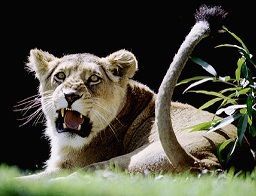Controlling feral animals and plants can help save Australia's biodiversity: QUT Researchers

According to one of the findings suggested by a study that lasted for three years, control of feral pigs could help prevent 148 species of plants and animals in Australia from becoming extinct. The comprehensive study was carried out by Jennifer Firn of the Queensland University of Technology, or QUT.
According to phys.org, the collaboration between the researchers at QUT and the CSIRO's Conservation Decisions team aimed to “identify and prioritise 23 strategies to protect endemic species in the world's largest internally draining lake system.” According to Firn, controlling the feral population and in turn, by saving the endemic animals and plant, the total food production in the area could be increased by 10 percent.
"It's been estimated feral animals and plants cost the Australian economy more than $5 billion in lost agricultural productivity each year, quite apart from the loss of our rare and unique species," said Firn in a press release.
The Lake Eyre Basin is one of the most biodiverse areas in Australia. It serves as a home to 13 species of plants and 65 species of animals. However, the Mound Spring ecosystem in the area is currently threatened, in addition to other species such as the Yellow-Footed Rock Wallaby and Great Bilby. The Lake Erye Basin covers a large part of Australia, including New South Wales, the Northern Territory, South Australia and a portion of Queensland.
The researchers estimate that if the spread of invasive plants is not controlled, then 29 out of 148 native species of plants and animals could be completely lost in the next five decades. The research team has prepared a list of 12 invasive plants and 11 feral animals-related strategies that could potentially help conserve the threatened species.
"The most cost-effective measure we could take is the control of feral pigs at a cost of $2 million per annum in targeted location across the Basin, as they have a negative impact on both native plants and animals," said Firn.
“Managing the populations of other feral predators such as cats, dogs and foxes follows as the best strategy for threatened mammals.”
Contact the writer at feedback@ibtimes.com.au, or let us know what you think below.




















